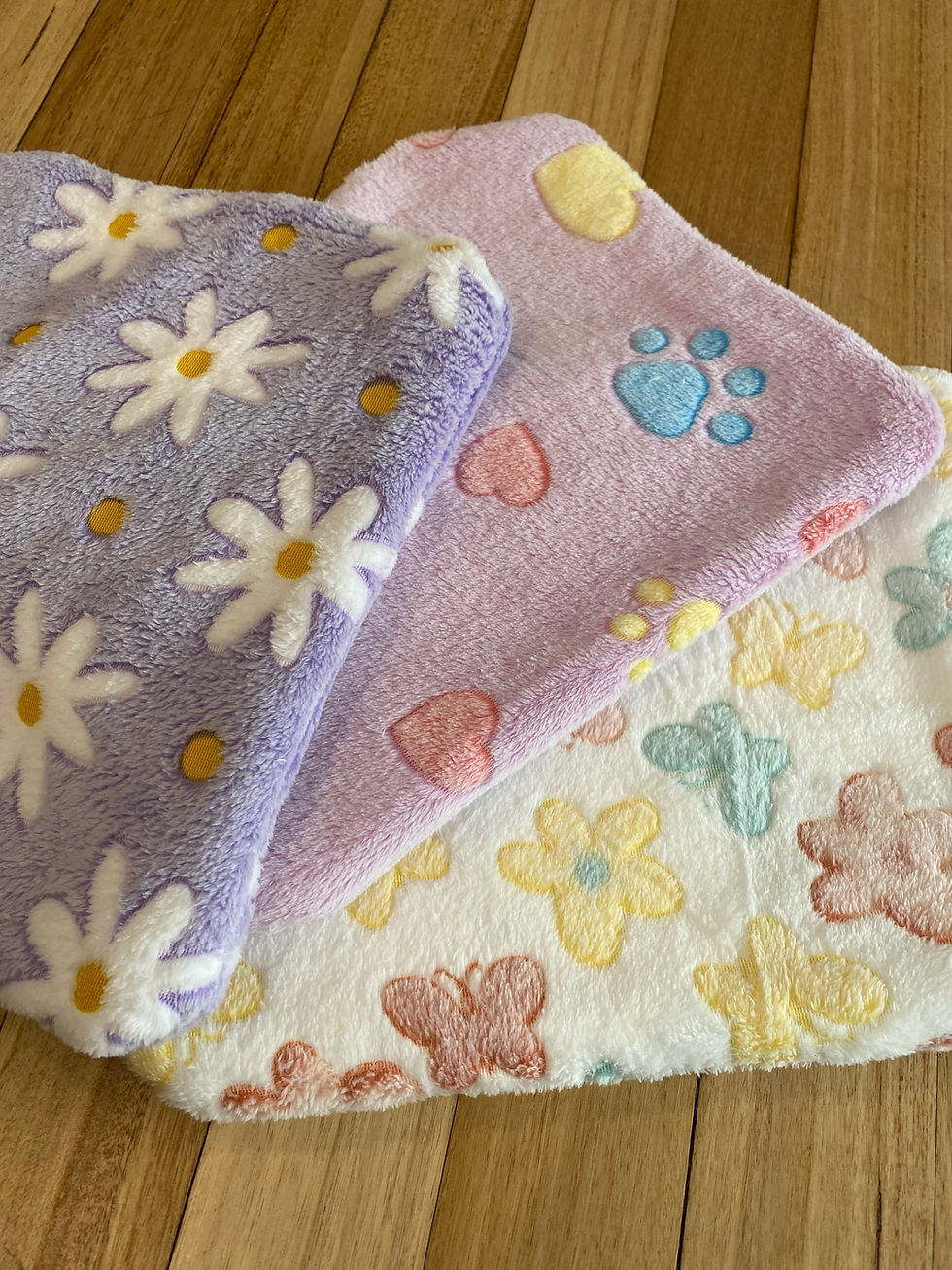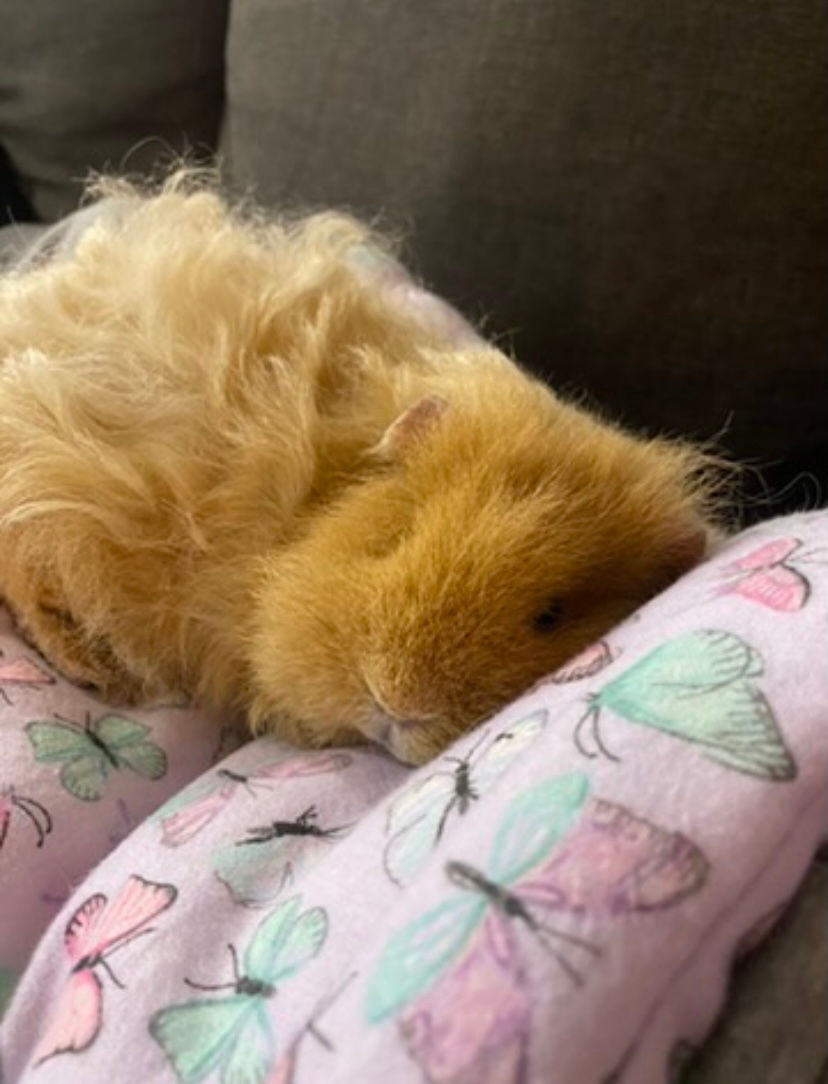Bedding, what are the options?
- Kelly Pierce
- Sep 27
- 3 min read
Guinea Pig Bedding Options
Generally, the two main guinea pig bedding options are Fleece and Wood Shavings. Whether you go with one or the other, the question is, which is best? Really, it's a case of time, cleaning maintenance, and cost.
Fleece Bedding
Time: Requires regular washing and maintenance.
Cleaning Maintenance: Needs to be cleaned frequently to prevent odors.
Cost: Higher initial cost due to the need for multiple fleece liners.
Wood Shavings
Time: Easier to replace, but requires regular checks for soiled areas.
Cleaning Maintenance: Can absorb moisture and control odours, but needs to be replaced regularly.
Cost: Generally lower initial cost, but ongoing expenses can add up.
As indoor guinea pigs become more popular, the choice of bedding is evolving. While wood shavings have their benefits, fleece may offer a more sustainable and comfortable option for pet owners.
Ultimately, the choice between fleece and wood shavings depends on your personal preferences regarding time, cleaning maintenance, and budget. Each option has its pros and cons, so consider what works best for you and your guinea pig.
While fleece would be my choice, let's consider shavings as well. If you opt for this, ensure they are dust-extracted and kiln-dried. Steer clear of pine and cedar.
Safe shavings are crucial, as the wrong kind can cause respiratory issues due to dust and oils. Consider wood shaving products like this one:
Image: Pinterest katiemounsey0062
Some things I would not recommend include sawdust due to its potential to irritate guinea pigs' lungs and respiratory systems. Sawdust is a finer form of wood shavings and can cause the same issues as wood shavings. It is not suitable for guinea pigs.
Hay is undoubtedly essential for guinea pigs as a daily requirement and a crucial component of their diet. However, when used as bedding, it can rapidly become damp and dirty. Straw is not advisable because it is rigid and often sharp, posing a risk to guinea pigs and potentially causing injuries.
While disposable pee mats have gained popularity among some bunny and guinea pig owners, I personally avoid them for several reasons. If guinea pigs chew on them and ingest them, it can lead to digestive problems, posing a danger. Additionally, they can become waterlogged and soggy, contributing more waste to the garbage. There's also the ongoing expense of purchasing them regularly. I certainly wouldn't suggest using these. Instead, if you're not using fleece or cage liners, I recommend opting for towels, bath mats, and blankets that can be easily washed.

Cleaning varies significantly based on the materials you've chosen for your guinea pig setup. If you've opted for wood shavings and a natural environment, you'll need ample space in the trash or a sustainable method for waste disposal. If, like me, your organics bin fills up quickly, this might not be the best choice for you. Composting could help reduce the amount of waste going into the trash. You can compost used hay, uneaten food such as vegetables, and bedding material. Here's a blog you might find helpful if you decide to compost your guinea pig waste: https://gardenerd.com/blog/ask-gardenerd-guinea-pig-poop/
If you're a fan of fleece or thinking about using it as your bedding, it's simple to maintain. Just brush or dust off any debris and toss it in the washing machine. Consider placing dirty items in a pillowcase or wash bag before washing. A 40-degree wash works perfectly fine, and I either tumble dry my fleece bedding or line dry it during the warmer months. For any marks or stains on the fleece, a fabric stain remover is effective before washing.

In conclusion, my position on the bedding debate is clear. Nonetheless, I have considered a more natural environment; perhaps if my setup were different or if I had a spacious outdoor enclosure, I might think differently. Based on my experience with my guinea pigs, they enjoy being comfortable. They love their soft mats and curling up warmly on their fleece.










Comments